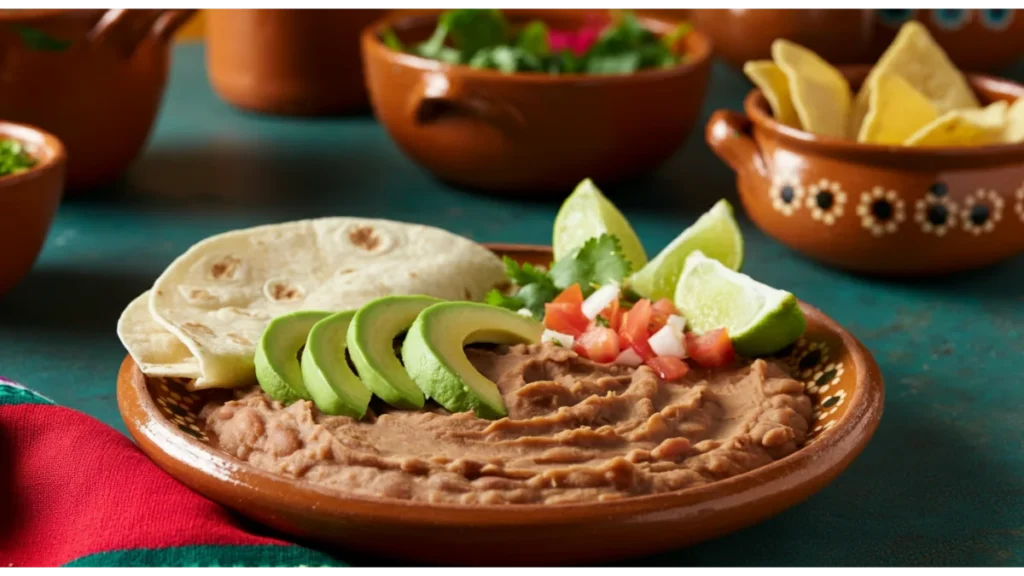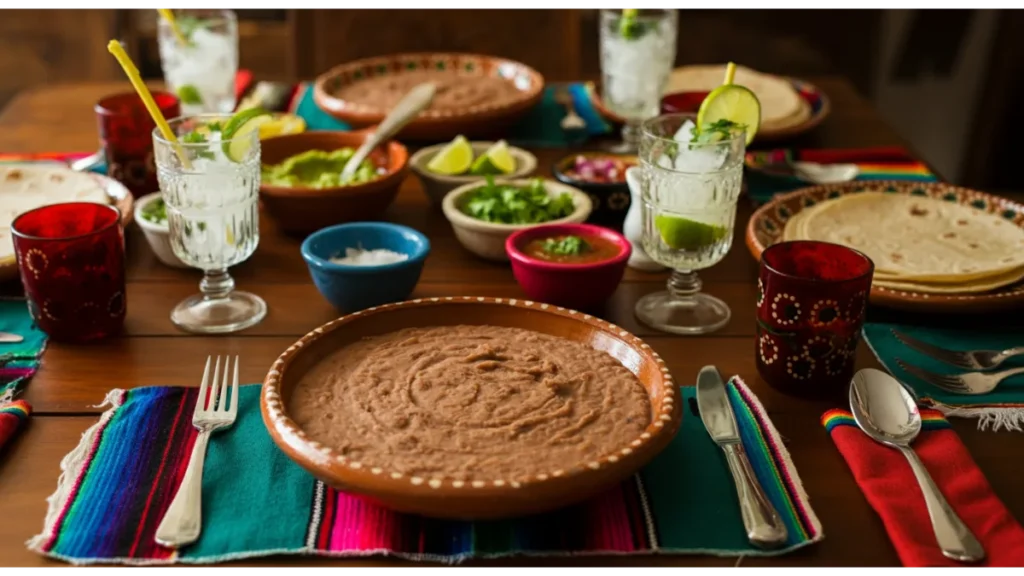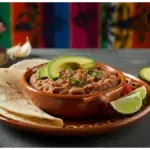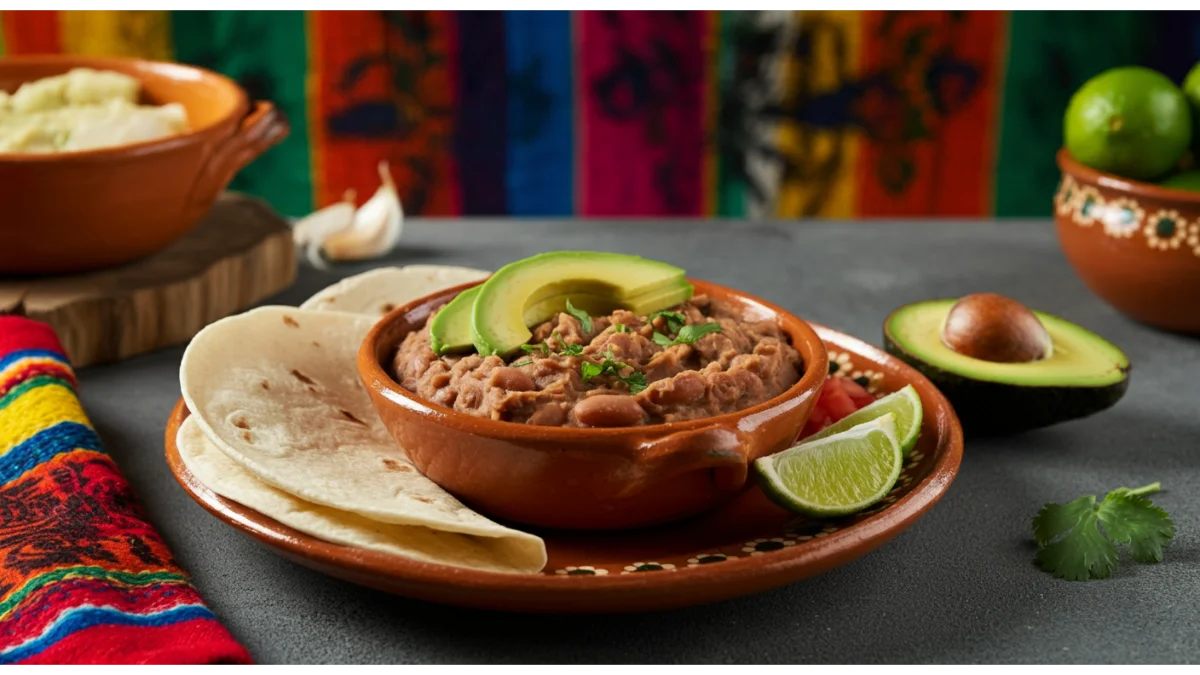Are Refried Beans Healthy? Discover Their Surprising Benefits!
Refried beans have long been a staple in many cuisines, particularly in Mexican and Tex-Mex dishes. These creamy, flavorful beans are often seen as a delicious side dish or a filling for burritos and tacos. However, a common question arises: Are refried beans healthy? In this article, we will delve into the nutritional aspects, health benefits, and potential drawbacks of refried beans. We will also provide practical tips for preparing them, variations to suit different dietary needs, and answer frequently asked questions. By the end, you’ll have a comprehensive understanding of how refried beans can fit into a healthy diet.
The Cultural Significance of Refried Beans
Before we dive into the health aspects, it’s important to acknowledge the cultural significance of refried beans. Originating from Mexico, refried beans (or “frijoles refritos” in Spanish) have a rich history, often served at family gatherings, celebrations, and everyday meals. They are not just a food; they represent tradition and comfort for many. Understanding their cultural background can enhance our appreciation for this dish and its versatility in modern cooking.
Key Aspects of Refried Beans

Nutritional Overview
Refried beans are typically made from pinto beans or black beans, which are cooked, mashed, and then fried. This preparation method can vary, affecting their nutritional profile. Here are some key aspects to consider:
- Rich in Protein: Beans serve as a fantastic source of plant-derived protein. A one-cup serving of refried beans can provide approximately 15 grams of protein, making them a great option for vegetarians and vegans.
- Fiber is crucial for maintaining digestive health, as it supports regular bowel movements and helps prevent constipation. Refried beans are high in dietary fiber, with about 13 grams per cup.
- Packed with Nutrients: Refried beans are a good source of various vitamins and minerals, including iron, magnesium, potassium, and folate. These nutrients are vital for overall health, supporting functions such as energy production, muscle function, and red blood cell formation.
- Low in Fat: When prepared with minimal oil, refried beans can be a low-fat option. However, many recipes call for lard or other fats, which can increase the calorie count and saturated fat content.
- Versatile Ingredient: Refried beans can be used in various dishes, from burritos to nachos, making it easy to incorporate them into your meals.
Supporting Data and Statistics
According to the USDA, a one-cup serving of refried beans made from pinto beans contains approximately:
- Calories: 220
- Protein: 15 grams
- Fat: 1 gram (without added fat)
- Carbohydrates: 40 grams
- Fiber: 13 grams
These statistics highlight the nutritional density of refried beans, making them a valuable addition to a balanced diet.
Ingredients List

When making refried beans, simplicity is key. Here’s a clear and precise list of ingredients for a basic recipe:
- 2 cups cooked pinto beans (or black beans)
- 1 tablespoon olive oil (or lard for traditional preparation)
- 1 small onion, finely chopped
- 2 cloves garlic, minced
- 1 teaspoon ground cumin
- Salt and pepper to taste
- Optional: Jalapeños or chili powder for added heat
Step-by-Step Instructions
Preparing refried beans at home is straightforward and allows you to control the ingredients. Follow these beginner-friendly steps:
Step 1: Prepare the Beans
For dried beans, it’s recommended to soak them overnight and cook them until they are soft. Alternatively, you can use canned beans for convenience. To decrease sodium levels, rinse and drain canned beans before use.
Step 2: Sauté the Aromatics
In a large skillet, warm the olive oil over medium heat. Add the diced onion and sauté until it becomes translucent, which should take about five minutes. After that, introduce the minced garlic and cook for another minute, stirring often to avoid burning.
Step 3: Mash the Beans
Mash the beans to your preferred texture using a potato masher or a fork. For creamier beans, you can add a little water or vegetable broth.
Step 4: Season the Mixture
Stir in the ground cumin, salt, and pepper. If you like it spicy, add jalapeños or chili powder at this stage. Cook for an additional 5-10 minutes, stirring occasionally, until heated through.
Step 5: Serve and Enjoy
Once the beans are well-mixed and heated, remove them from the heat and serve them warm. They can be used as a side dish, filling, or dip.
Practical Tips
- For Creamier Beans: Blend the beans with a little broth in a food processor for an ultra-smooth texture.
- Storage: Keep them in airtight containers or freezer bags for a maximum of three months.
Nutritional Value
Here’s a table summarizing the nutritional value of the main ingredients used in refried beans:
| Ingredient | Calories | Protein | Fat | Carbohydrates | Fiber | Key Nutrients |
|---|---|---|---|---|---|---|
| Pinto Beans (1 cup) | 220 | 15g | 1g | 40g | 13g | Iron, Magnesium, Folate |
| Olive Oil (1 tbsp) | 119 | 0g | 14g | 0g | 0g | Vitamin E, Antioxidants |
| Onion (1 small) | 45 | 1g | 0g | 11g | 2g | Vitamin C, Fiber |
| Garlic (2 cloves) | 9 | 0g | 0g | 2g | 0g | Manganese, Vitamin B6 |
Benefits of Refried Beans

Nutritional Benefits
- Weight Management: The high fiber and protein content in refried beans can promote satiety, helping you feel full longer. This can be beneficial for weight management and reducing overall calorie intake.
- Heart Health: Beans are known to support heart health due to their ability to lower cholesterol levels and reduce blood pressure. The fiber in refried beans helps to keep cholesterol in check, while potassium aids in regulating blood pressure.
- Blood Sugar Control: The complex carbohydrates in refried beans release energy slowly, preventing spikes in blood sugar levels. This makes them a great option for those managing diabetes or looking to maintain steady energy levels.
- Digestive Health: The fiber content in refried beans supports healthy digestion by promoting regular bowel movements and preventing constipation. A diet rich in fiber can also help reduce the risk of developing digestive disorders.
- Nutrient Density: Refried beans are nutrient-dense, meaning they provide a high amount of vitamins and minerals relative to their calorie content. This makes them an excellent choice for those looking to maximize their nutrient intake without consuming excessive calories.
Real-Life Examples
Many people have integrated refried beans into their diets for various health reasons. For instance, a vegetarian athlete might rely on refried beans as a protein source in their meals. Additionally, families looking for budget-friendly meals can use refried beans as a filling and nutritious option that stretches their grocery budget.
Culinary Versatility
Here are several enjoyable ways to incorporate refried beans into your meals:
- Burritos and Tacos: Use refried beans as a base layer in burritos or tacos, adding protein and fiber to your meal.
- Nachos: Spread refried beans on tortilla chips, top with cheese, jalapeños, and other toppings for a delicious snack or appetizer.
- Dips: Blend refried beans with spices and serve them as a dip with tortilla chips or vegetables.
- Soups and Stews: Add refried beans to soups or stews for added thickness and nutrition.
Overcoming Challenges
While refried beans are nutritious, there can be challenges when incorporating them into your diet. Here are some practical tips:
Common Issues
- High Sodium Content: Many canned refried beans contain added sodium, which can be a concern for those monitoring their salt intake. To mitigate this, opt for low-sodium canned beans or make your own from scratch.
- Texture Preferences: Some people may not enjoy the texture of traditional refried beans. If this is the case, consider blending the beans for a smoother consistency or adjusting the cooking method to suit your taste.
- Fat Content: Traditional recipes often use lard, which can be high in saturated fat. Substitute with healthier oils like olive oil or avocado oil to reduce fat content while still enjoying the flavor.
- Allergies and Intolerances: While refried beans are generally safe for most diets, some individuals may have allergies or intolerances to certain ingredients. Always check labels for potential allergens, and consider making your own to control the ingredients.
Tips for Healthier Preparation
- Use Fresh Ingredients: Whenever possible, use fresh ingredients instead of canned to control sodium and preservatives.
- Experiment with Spices: Enhance the flavor of your refried beans without adding extra calories by using a variety of spices and herbs. Cumin, chili powder, and smoked paprika can add depth to the flavor profile.
- Add Vegetables: Incorporating vegetables like bell peppers, spinach, or zucchini can increase the nutritional value and add texture to your refried beans.
Future Trends
As health consciousness continues to rise, the demand for plant-based proteins is expected to grow. Refried beans, being a versatile and nutritious option, are likely to see increased popularity. Here are some predictions:
- Increased Availability: More restaurants and food brands may offer healthier versions of refried beans, catering to health-conscious consumers.
- Innovative Products: Expect to see new products that incorporate refried beans into snacks and convenient meal options, such as bean dips or ready-to-eat burritos.
- Sustainability Focus: As sustainability becomes a priority, the emphasis on plant-based foods will likely increase, promoting beans as a sustainable protein source.
- Healthier Fast Food Options: With the growing trend of healthy eating, fast-food chains may begin to offer refried beans as a healthier alternative to traditional meat fillings in their burritos and tacos.
- Increased Awareness of Plant-Based Diets: As more people adopt plant-based diets for health, environmental, and ethical reasons, the popularity of beans, including refried beans, is expected to rise.
Tips and Tricks Section
Helpful Advice for Preparation
- Soaking Beans: This method also aids in eliminating some of the indigestible sugars that may lead to gas. If using dried beans, soak them overnight to reduce cooking time and improve digestibility.
- Flavor Enhancements: Add spices like smoked paprika or cayenne pepper for a flavor boost. Fresh herbs like cilantro can also add freshness.
Ingredient Substitutions
- For a Creamy Texture: Consider adding a splash of coconut milk or Greek yogurt for creaminess without adding too many calories.
- Vegetarian/Vegan Options: Ensure that any added fats, like butter or lard, are replaced with plant-based alternatives.
Variations and Adaptations
Refried beans can easily be adapted to suit various dietary preferences:
- Gluten-Free: Refried beans are naturally gluten-free, making them a safe choice for those with gluten sensitivities.
- Vegan: Simply use olive oil instead of lard and avoid adding any dairy products.
- Low-Carb: For a lower-carb option, use black soybeans instead of traditional beans.
- Spicy Variations: For those who enjoy heat, consider adding diced jalapeños, chipotle peppers, or a dash of hot sauce to the beans during cooking.
- Cheesy Refried Beans: Stir in some shredded cheese just before serving for a creamy, cheesy twist.
- Herbed Refried Beans: Experiment with adding fresh herbs like cilantro or parsley to enhance the flavor and nutritional profile.
FAQs Section
Common Questions
Q: Can I freeze refried beans?
A: Yes, refried beans freeze well. Store them in airtight containers or freezer bags for a maximum of three months. When ready to use, thaw them in the refrigerator overnight and reheat on the stove or in the microwave.
Q: How can I reduce the gas associated with eating beans?
A: Soaking beans before cooking and using spices like cumin and ginger can help reduce gas production. Cooking beans thoroughly also aids in digestion.
Q: Are there any good substitutes for refried beans?
A: You can use hummus or mashed avocado as a creamy, nutritious alternative in recipes. Additionally, black bean puree can serve as a great substitute.
Q: What are some creative ways to use refried beans?
A: Refried beans can be used as a spread on sandwiches, a filling for quesadillas, or even as a base for a hearty breakfast burrito. They can also be incorporated into salads for an additional protein boost.
Q: Are refried beans high in calories?
A: Refried beans can be calorie-dense if prepared with excessive oil or lard. However, when made with minimal added fats, they can be a nutritious, low-calorie option.
Q: Can I make refried beans in a slow cooker?
A: Yes! You can cook soaked beans in a slow cooker with spices and aromatics, then mash them once they are tender for a convenient and delicious meal.
Conclusion
In conclusion, refried beans are not only delicious but also packed with nutritional benefits that make them a worthy addition to your diet. From their high protein and fiber content to their versatility in various dishes, they can support your health goals while satisfying your taste buds. Whether you’re looking to manage your weight, improve heart health, or simply enjoy a tasty meal, refried beans can play a significant role.
Incorporating refried beans into your diet can be both enjoyable and nutritious. With various preparation methods, ingredient substitutions, and flavor enhancements, you can customize this dish to suit your taste preferences and dietary needs. Don’t hesitate to experiment with different spices, vegetables, and cooking techniques to discover your favorite way to enjoy refried beans.
If you found this article helpful, please share it with friends and family, and let us know your thoughts in the comments below. Don’t forget to subscribe for more informative content on healthy eating and cooking tips!
Are Refried Beans Healthy?

Refried Beans
Ingredients
Main Ingredients
- 2 cups cooked pinto beans (or black beans)
- 1 tablespoon olive oil (or lard for traditional preparation) Can substitute with healthier oils
- 1 small onion, finely chopped
- 2 cloves garlic, minced
- 1 teaspoon ground cumin
- to taste Salt and pepper
- optional Jalapeños or chili powder for added heat
Instructions
Preparation
- Soak dried beans overnight, then cook them until soft. Alternatively, use canned beans and rinse to reduce sodium.
- In a large skillet, warm olive oil over medium heat. Add diced onion and sauté until translucent, about 5 minutes.
- Add minced garlic and cook for another minute, stirring to avoid burning.
- Mash the beans to your desired texture using a potato masher or fork. For creamier beans, add a little water or vegetable broth.
- Stir in ground cumin, salt, and pepper. Add jalapeños or chili powder if desired, and cook for an additional 5-10 minutes, stirring occasionally.
- Once well-mixed and heated, remove from heat and serve warm as a side dish, filling, or dip.

